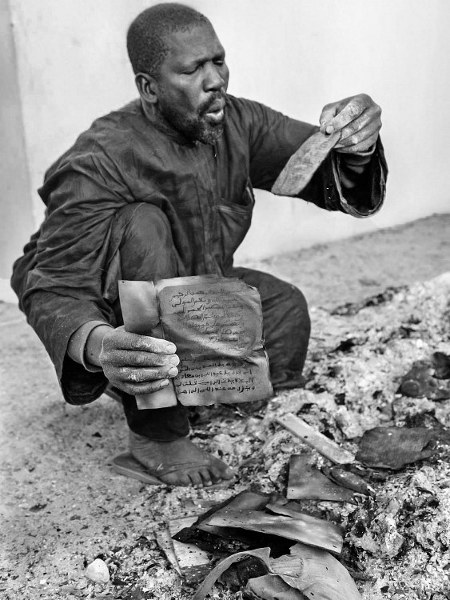

Burned manuscripts in the Ahmad Baba institute’s Sankore building, January 2013.
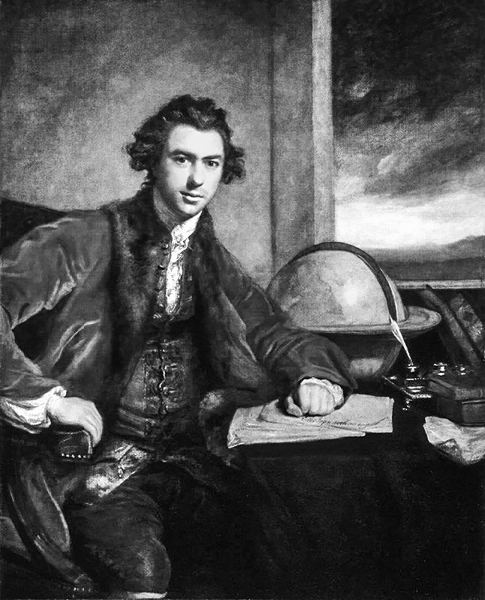
Joseph Banks, a founder of the African Association, as painted by Sir Joshua Reynolds, soon after his return from James Cook’s first circumnavigation in 1771.
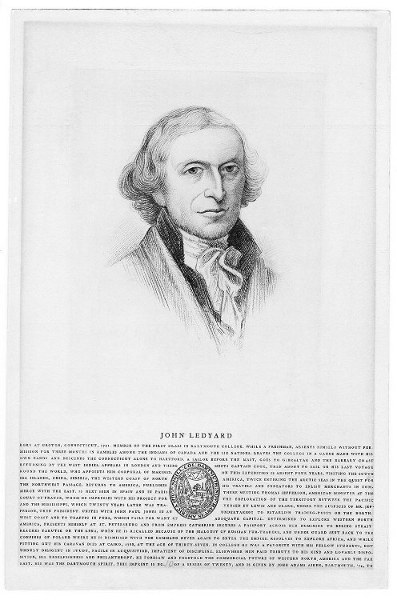
An “extraordinary man”: Connecticut-born John Ledyard, the African Association’s first explorer, who died in Cairo in 1789.
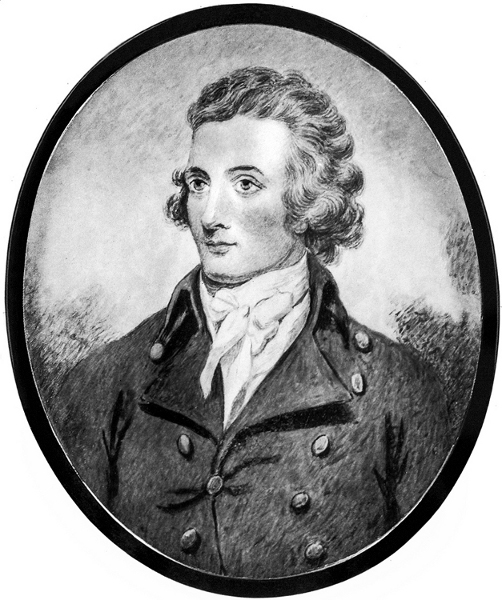
Mungo Park, a Scottish doctor, reached the Niger on July 21, 1796. The account of his travels created a new archetype for the adventurer in Africa.
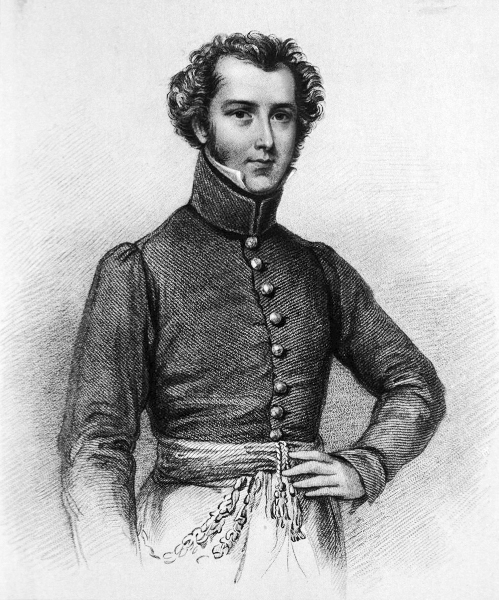
Alexander Gordon Laing, who became the first modern European to reach Timbuktu, wrote of the “abundant” records in the town. He was murdered soon after leaving it.
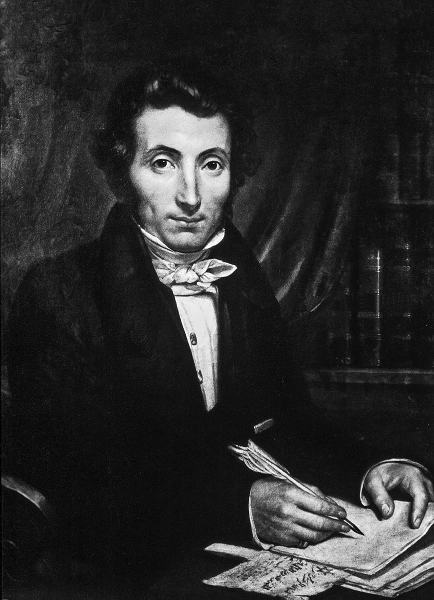
René Caillié, who returned alive from Timbuktu, was awarded the Société de Géographie’s 10,000 franc prize, which provoked a furious response in Britain.
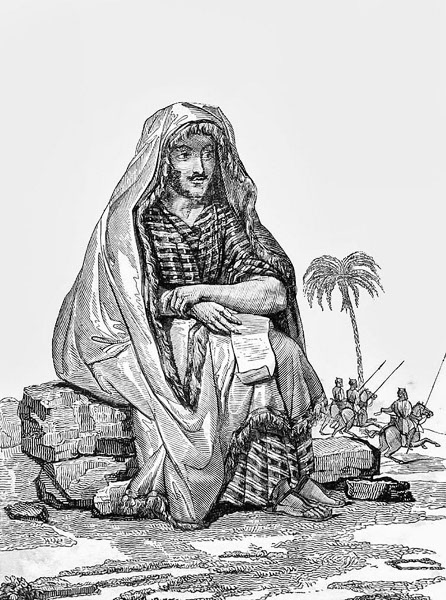
Caillié’s expedition to Timbuktu was low-cost and low-key: he learned Arabic and traveled in the guise of a Muslim.
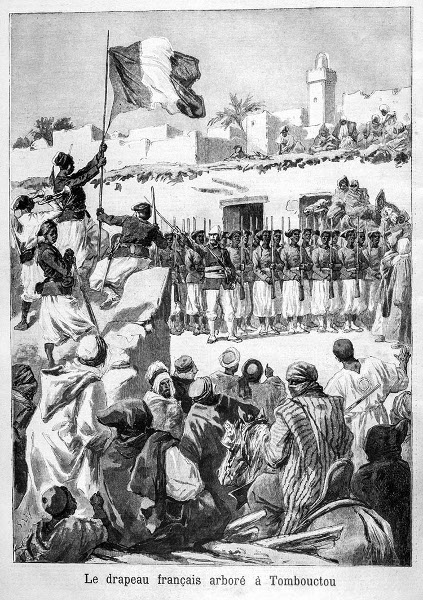
Colonial troops raising the French flag over Timbuktu in 1894, as envisaged by the artist Frédéric Lix.
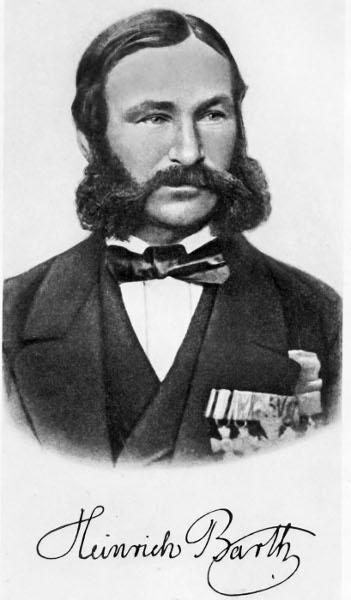
Heinrich Barth, perhaps the greatest explorer of West Africa, found a copy of the Tarikh al-sudan in June 1853 in Gando.
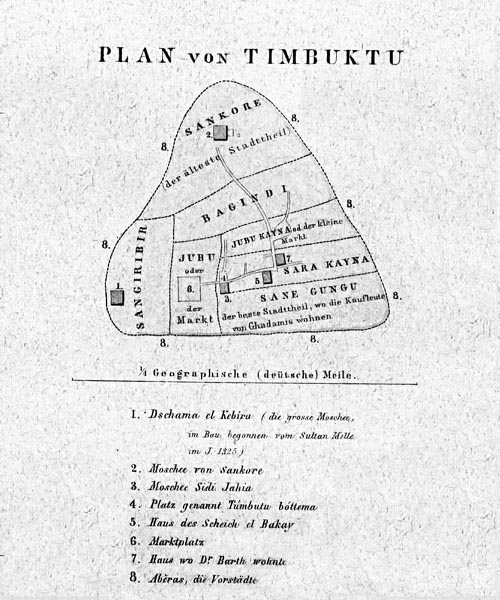
A map of Timbuktu, drawn by Heinrich Barth, identifies six districts surrounding the market. The great mosque, Jingere Ber, is in the bottom left corner.
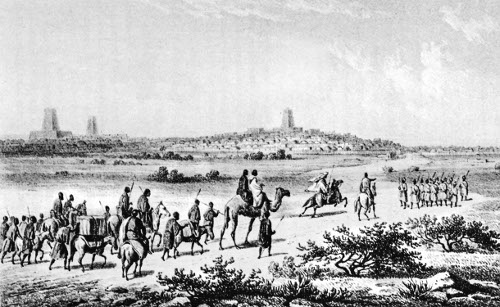
Barth arriving at Timbuktu on September 7, 1853. Seeing a mass of people coming to welcome him, he galloped forward, gun in hand, to receive their salaams.
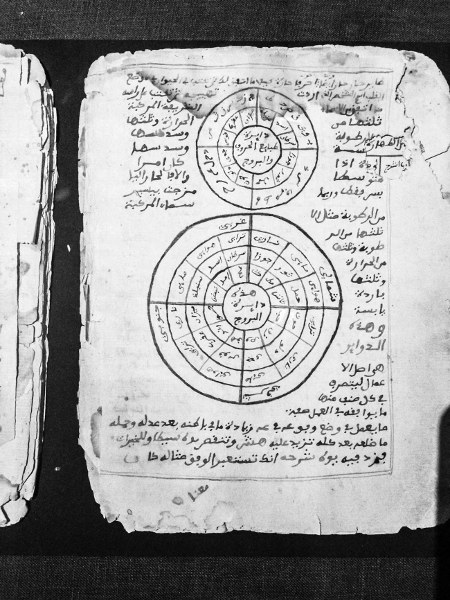
A manuscript on astrology, from the Mamma Haidara collection, which depicts the signs of the zodiac and the points of the compass.
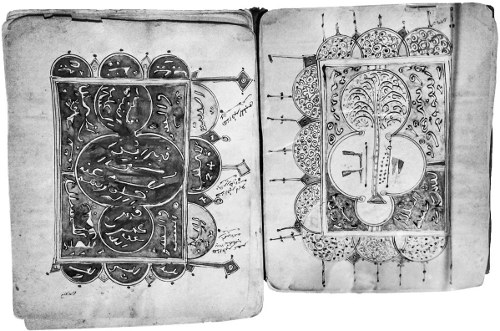
An illustrated manuscript with a famous collection of Muslim prayers, the Dalail al-khayrat, in the Ahmad Baba institute.
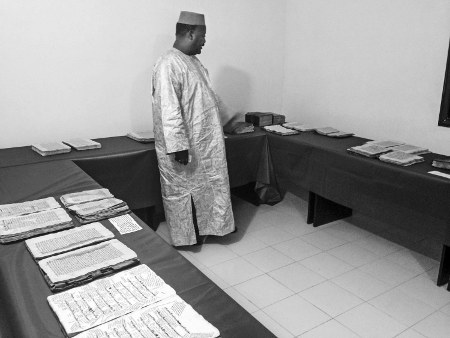
Abdel Kader Haidara with some of his more precious manuscripts, on display in Savama’s new Bamako office.
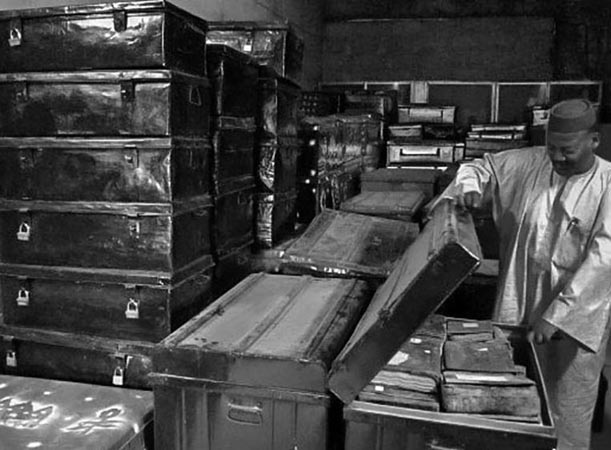
Haidara showing steel lockers filled with manuscripts to Dutch diplomats in Bamako in early 2013.
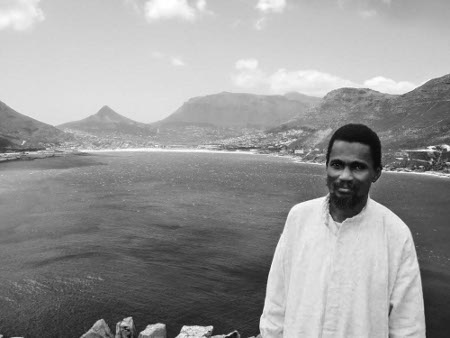
Ismael Diadié Haidara, the proprietor of the Fondo Kati library, who took four of his most precious manuscripts to Bamako after the first week of occupation.
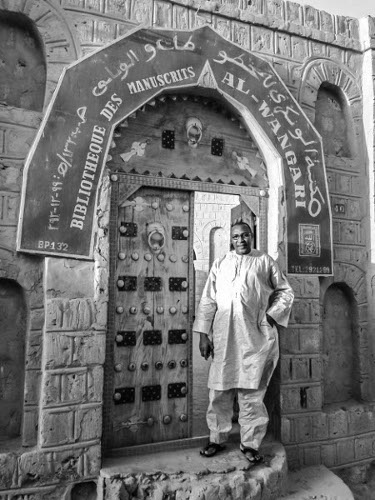
Mukhtar bin Yahya al-Wangari outside his family library in central Timbuktu. The al-Wangari collection was one of many that remained in the city throughout the occupation.
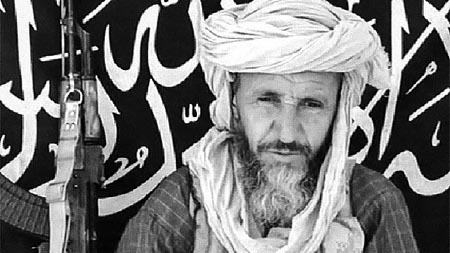
Abou Zeid, the “Little Emir,” was the al-Qaeda governor of Timbuktu in 2012. He was killed by French forces in northern Mali in February 2013.
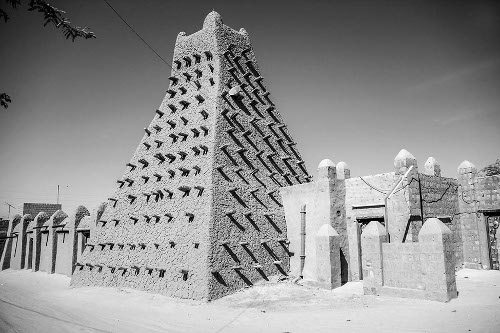
The Sankore mosque, in the north of the city. The area around the mosque was home to many of Timbuktu’s Islamic scholars in the fifteenth and sixteenth centuries.
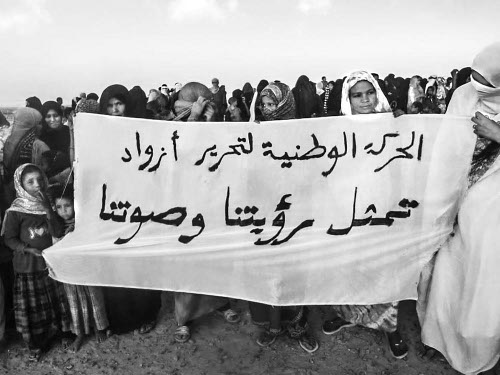
Pro-MNLA demonstrators marching against jihadist rule in October 2012, after a crackdown on Timbuktu’s women by the Islamic Police.
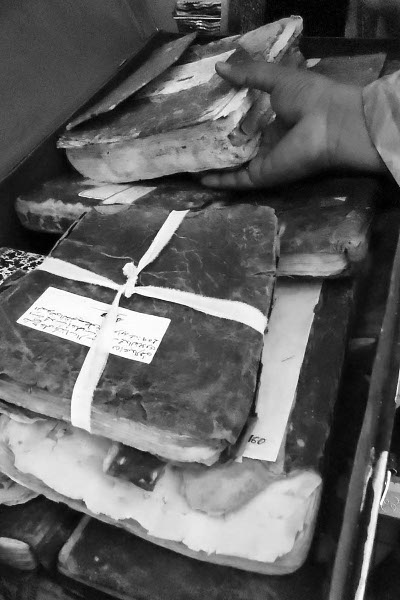
A locker filled with manuscripts that were shown to Dutch diplomats in a storage room in Bamako in early 2013.